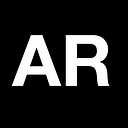Choose any one of the 10 problem statements, Conduct secondary research on it, and Document your findings
Based on the digital platforms I choose an augmented reality (AR) museum guide because it can bring a better understanding of the museum visitors to experience more flexible information. Now we are going to see augmented reality in 10 steps how we are going to build an augmented reality application.
Step 1: Problem statementent
I am starting with the problem statement because everything starts with a problem I have majorly focused on people’s questions because of that we will try to answer
- How museums are going to provide clear and concise information to museum visitors?
- How can we create art more informative and attractive and which can be easily accessible to visitors via augmented reality?
Step 2: Structure
- Based on the ideas I have got I am going to define what are the solutions we can make and how it is going to be achieved.
- Implementing ideas
- Requirements and quantitative surveys
- User interaction
- Qualitative surveys
Step 3: Quantitative surveys
There are lots of people who are involved in these surveys and participants’ answers hat they have thought about it.
- What information about art do you want to see in the artwork like the artist’s full data, title, and main points only?
- What type of advanced data you need when you see a art or painting ?
- Do you want to know about the artist’s painting style, how many people have drawn a single painting, from date of birth to date of death furthermore how many arts he would have done?
Step 4: Design method
The method used in this project is the double diamond design process it include discover, define, develop and deliver.
Step 5: User interface
The user interface is all about visual interaction and appearance in this we are going to build interfaces that are interactive and also responsive starting from wireframing to actual designs
My application allows features like:
- Advanced artwork knowledge
- Fun charactristics
- Adding more features
- Attractive artwork
- Exploration
Step 6: prototypes
Prototypes can also be seen as marketplaces by using prototype designs and users gather to see problems they are going to see and next, they see behaviors and interactions.
Prototypes will be tested by shareholders then they discuss the thoughts of the prototypes.
The prototype works both inside the exhibition or maybe around the exhibition and it makes visitors experience more and they can read the artworks easily.
Step 7: User tests
- User tests will be conducted with the real visitors in the museum.
- They were told to direct their phone onto target without telling them what was going to happen.
- Sometimes the visitors ask some questions like
- What that of prototype is this?
- Did you read the text?
- Is this application available in the play store or in-app store?
Step 8: Usability testing
Augmented reality is tested in many museums and artwork places and we also have a Google arts and culture website which helps user to having better understanding of the user interfaces.
Step 9: conclusion
This augmented reality helps users to test various applications and those who love arts, paintings, and sculptures in a beautiful manner and it helps to learn quickly.
Step 10 :
I choose this augmented reality topic to improve my career in a very effective and impressive way so that I can explore this world peacefully.
